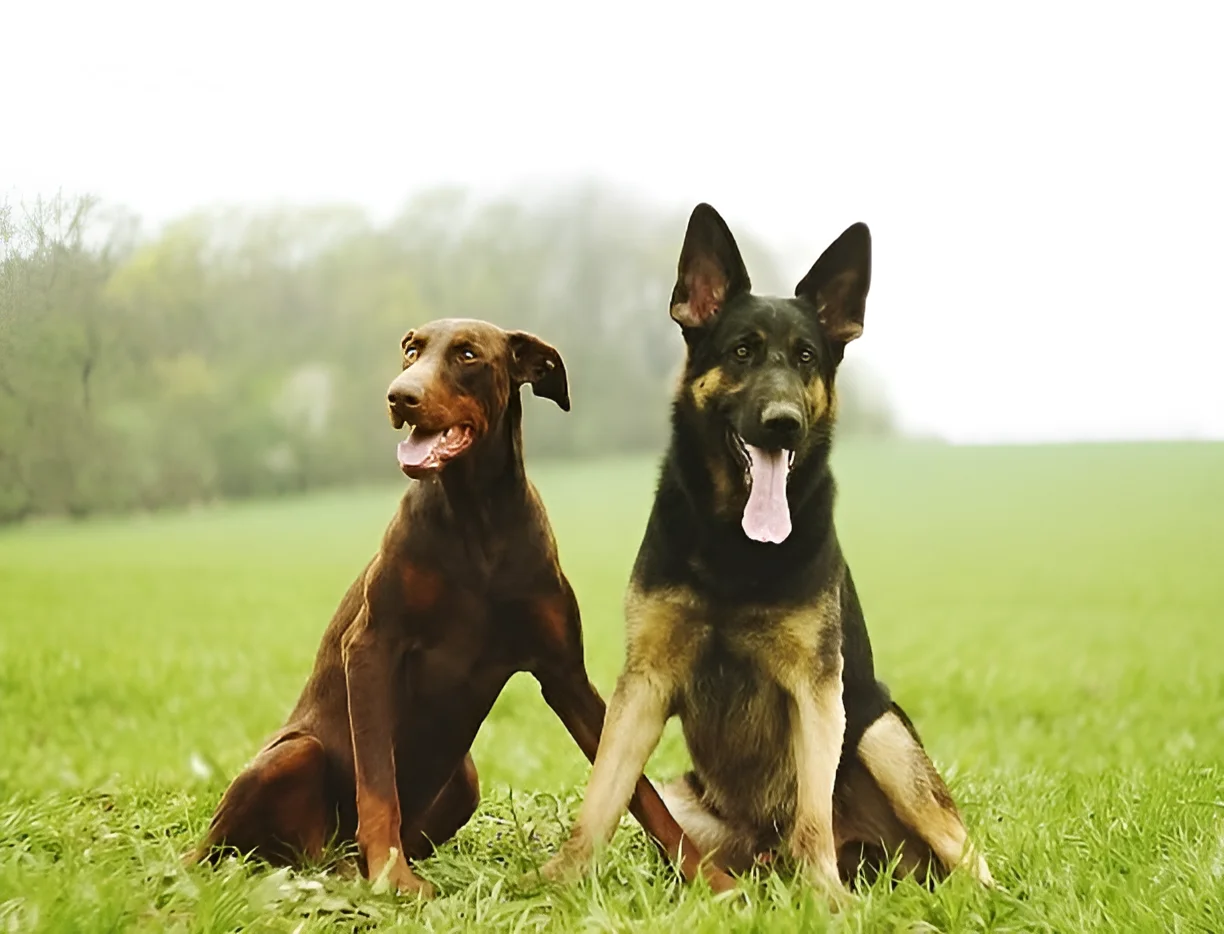Both Dobermans and German Shepherds are highly trainable, but German Shepherds are generally considered easier to train due to their strong work ethic and eagerness to please. This article explores the training characteristics of both breeds, their temperaments, and tips for effective training.
Dobermans and German Shepherds are two of the most intelligent and versatile dog breeds, often used in police, military, and service work. Their trainability is one of the key reasons for their popularity. This comprehensive guide examines the training ease of Dobermans and German Shepherds, comparing their temperaments, training needs, and providing tips for successful training.
Understanding the Breeds
Doberman Pinscher
The Doberman Pinscher is a breed known for its loyalty, intelligence, and protective nature.
- Origins: Developed in Germany by Karl Friedrich Louis Dobermann in the late 19th century, the Doberman was bred to be a guard dog.
- Physical Traits: Dobermans are medium to large-sized dogs with a sleek, muscular build. They typically weigh between 60-100 pounds and stand 24-28 inches tall.
- Temperament: Dobermans are known for their alertness, loyalty, and protective instincts. They are often described as fearless and determined.
German Shepherd
The German Shepherd is a breed celebrated for its intelligence, versatility, and strong work ethic.
- Origins: The breed was developed in Germany in the late 19th century by Captain Max von Stephanitz, who aimed to create the perfect herding dog.
- Physical Traits: German Shepherds are large dogs with a robust, athletic build. They typically weigh between 75-90 pounds and stand 22-26 inches tall.
- Temperament: German Shepherds are known for their intelligence, loyalty, and courage. They are highly trainable and excel in various roles, including police and military work.
Comparing Trainability
Intelligence and Learning Ability
Both Dobermans and German Shepherds are highly intelligent breeds, but there are some differences in their learning styles.
- Dobermans: Dobermans are incredibly intelligent and can learn commands quickly. However, they can be independent and may require a firm and consistent training approach.
- German Shepherds: German Shepherds are also highly intelligent and are known for their eagerness to please. They tend to pick up commands quickly and are often more willing to follow instructions without hesitation.
Temperament and Trainability
The temperament of each breed plays a significant role in their trainability.
- Dobermans: Dobermans are loyal and protective, which can make them excellent guard dogs. However, their independent nature means they may test boundaries and require a confident handler.
- German Shepherds: German Shepherds have a strong work ethic and are highly motivated by praise and rewards. Their eagerness to please and adaptability make them easier to train for various tasks.
Training Techniques
Positive Reinforcement
Positive reinforcement is an effective training method for both breeds.
- Rewards: Use treats, praise, and toys to reward desired behaviors. This encourages the dog to repeat the behavior.
- Consistency: Be consistent with commands and rewards to help the dog understand what is expected of them.
Socialization
Early socialization is crucial for both Dobermans and German Shepherds.
- Exposure: Expose your dog to different people, animals, and environments to build their confidence and reduce anxiety.
- Controlled Interactions: Ensure interactions are positive and controlled to prevent fear or aggression.
Obedience Training
Obedience training is essential for managing the behavior of both breeds.
- Basic Commands: Teach basic commands such as sit, stay, come, and heel. These commands form the foundation for more advanced training.
- Advanced Training: Once basic commands are mastered, move on to advanced training such as agility, tracking, and protection work.
Health Considerations
Common Health Issues
Both breeds are prone to certain health issues that can affect their training and overall well-being.
- Dobermans: Common health issues include hip dysplasia, dilated cardiomyopathy, and von Willebrand’s disease.
- German Shepherds: Common health issues include hip and elbow dysplasia, degenerative myelopathy, and bloat.
Regular Veterinary Care
Regular veterinary care is essential to ensure your dog remains healthy and fit for training.
- Health Screenings: Regular health screenings can help detect and manage health issues early.
- Preventative Care: Ensure your dog is up-to-date on vaccinations and preventative care to maintain their overall health.
Conclusion
In conclusion, both Dobermans and German Shepherds are highly trainable, but German Shepherds are generally considered easier to train due to their strong work ethic and eagerness to please. Understanding the unique characteristics and training needs of each breed can help you choose the right dog for your lifestyle and ensure successful training. With proper training, socialization, and care, both breeds can excel in various roles and make loyal, intelligent companions.
The photo featured below the post headline is Credit: Carmelka/istockphoto
I hope you find this post helpful and informative. If Yes’ feel free to share it with your friends!
Frequently Asked Questions
Are Dobermans harder to train than German Shepherds?
Dobermans can be more independent and may require a firm and consistent training approach, while German Shepherds are generally more eager to please and easier to train.
What training methods work best for Dobermans and German Shepherds?
Positive reinforcement, early socialization, and consistent obedience training are effective methods for both breeds.
What health issues should I be aware of when training Dobermans and German Shepherds?
Dobermans are prone to hip dysplasia, dilated cardiomyopathy, and von Willebrand’s disease, while German Shepherds are prone to hip and elbow dysplasia, degenerative myelopathy, and bloat.
How can I ensure successful training for my Doberman or German Shepherd?
Regular veterinary care, proper socialization, and consistent training using positive reinforcement techniques can help ensure successful training.
Which breed is better for first-time dog owners?
German Shepherds may be easier for first-time dog owners due to their strong work ethic and trainability, but both breeds require dedicated training and socialization.

